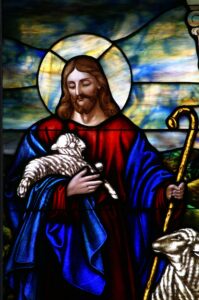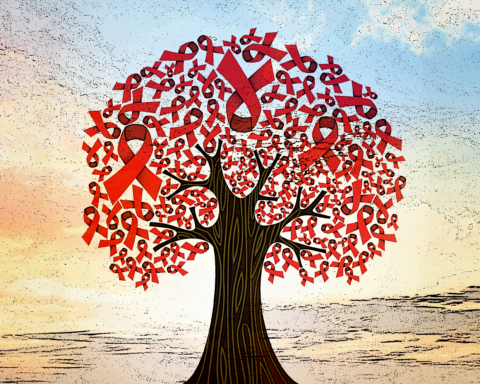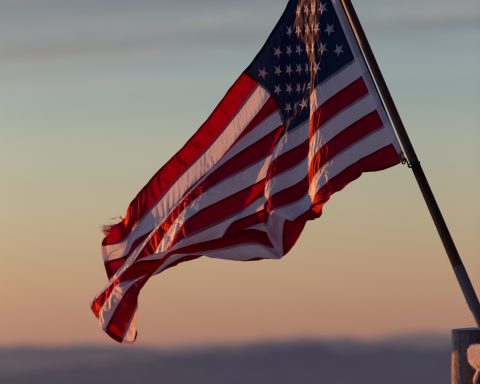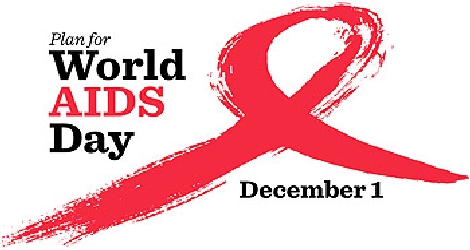On Wednesday, World AIDS Day, I saw a whole team of young leaders in the making—young women at St. Timothy’s, including our own Greta Finney, educating themselves and their peers about HIV and AIDS and calling them to solidarity and action.
Perhaps it is no coincidence that in the second portrait of hope, Isaiah features, over and over, the young. “The calf and the lion and the fatling together, and a little child shall lead them. The cow and the bear shall graze, and their young shall lie down together.” It is the children who are brave enough to play with snakes. Our hope for the future lies both in new leadership and in reconciliation, and perhaps Isaiah is suggesting that it is our youth who will lead the way.
When I was in Cape Town, South Africa, on a Watson fellowship to study the church’s response to AIDS, I had the opportunity to work with two youth groups from very different communities. One was a group of high schoolers and young adults from a Black African Xhosa Township called Khayelitsha. The other was a group of middle school students in a colored area called Bridgetown.
If you cringed at my use of the word “colored,” let me explain. In South Africa, and especially in the Western Cape, they use the word “colored” like we use the words “black” and “white,” descriptively, for a racially mixed group of South Africans who mostly speak Afrikaans and have their own unique history and culture. It is not a derogatory term (as it is in our own culture).
___________________________________________
…two churches that often find themselves on the opposite sides of issues… stood together to present an overture encouraging all Presbyterians to get tested for HIV and work to reduce the stigma that still surrounds even testing.
___________________________________________
During Apartheid, the White government went to great lengths to ensure that Black people and colored people saw each other as competition and enemies rather than potential allies in the struggle for equality.
Even today, there is still a lot of tension and mistrust between all the racial groups…the calf and the lion and the fatling are no longer separated by law… but they continue to be separated by geography, culture, language, and the deep legacy of Apartheid…
When I told the colored youth that I was thinking about bringing some older youth from Khayelitsha to help me get them thinking about HIV/AIDS and the Bible, they started freaking out. Why was I bringing murderers and robbers and rapists to their church? I explained, “These are youth in from a Presbyterian Church, just like yours.” But they were not convinced.
And to my surprise, on our way to Bridgetown the Khayelitsha youth let loose their own ugly stereotypes of colored people. I began to wonder if I had not fallen into the trap of the naïve young American do-gooder and gotten in over my head. I forgot momentarily about the power of the Holy Spirit.
Because, when we got to Bridgetown Presbyterian, and everyone was introduced, it was a totally different story. All the stereotypes and suspicions took a back seat to the task at hand and to the real live human beings and personalities that suddenly found themselves face to face.
The junior high youth at Bridgetown kept trying to impress the older youth from Khayelitsha. And the Khayelitsha youth were gentle and affectionate in return. We divided up into groups, each of which read a Bible passage and then came up with a skit relating it to HIV/AIDS. As we were leaving, the youth from Khayelitsha said, “We need to do that with our own Sunday school!” And not long after, they did.
I left that day with a vision of people of all different ages, races, nationalities, and religious beliefs coming together to tackle the problem of HIV and AIDS. A vision not unlike Isaiah’s.
That vision of the peaceable kingdom was reignited for me earlier this year, when the sessions of Central Presbyterian and Govans, two churches that often find themselves on the opposite sides of issues coming before our Presbytery for a vote, stood together to present an overture encouraging all Presbyterians to get tested for HIV and work to reduce the stigma that still surrounds even testing. I don’t know who was the wolf and who was the lamb, but there they were together, passionate about the Church’s role in fighting stigma and encouraging testing.
Leadership and reconciliation—apparently for Isaiah they go hand in hand. And to conquer AIDS, both are needed. We need courageous leaders who are willing to break the silence about HIV and the importance of getting tested. And I’m not just talking about clergy. We need courageous doctors and patients and parents and siblings and students and friends and partners and co-workers. We need leaders like Greta and her friends at St. Timothy’s.
___________________________________________
How will we be the body of Christ to a world infected by HIV and a world at risk of infection?
___________________________________________
We need leaders like a friend of mine who works for Grace Fellowship Church and Hope Springs, a local AIDS non-profit. She told me about asking her doctor for an HIV test, which shouldn’t have been a big deal since two years ago the CDC recommended routine testing for all people ages 13-65, regardless of perceived risk. But her doctor looked at this well-dressed, White, married woman and said, “You don’t need to worry about that.”
Thankfully, my friend knew better, and she told her doctor that as a married woman, she was sexually active and not using protection, and that the only person whose behavior she could be absolutely certain of was her own, and so she was at risk and would take an HIV test, thank you very much.
 We need leaders like that. And we also need leaders who are willing to reach across barriers of race and class and age and theology and sexual orientation. Because AIDS does. All the time.
We need leaders like that. And we also need leaders who are willing to reach across barriers of race and class and age and theology and sexual orientation. Because AIDS does. All the time.
The question for us is will we follow? Will we follow AIDS as it impacts every sector of society here and around the world? And will we follow Christ, who broke every barrier for the sake of healing and reconciliation? Will we join with the lambs and the goats and the lions and the wolves and even the snakes, until we have blasted every stereotype and broken every silence born of judgment or shame?
When we have eaten the bread of life and drunk from the cup of salvation, how will we be the body of Christ to a world infected by HIV and a world at risk of infection? Will the shoots of hope—the shoots of leadership and reconciliation—continue to spring up through us?
Find worship resources for World AIDS Day and Advent here.
_______________________
[1] The latest statistics of the global HIV and AIDS epidemic were published by UNAIDS in November 2009, and refer to the end of 2008; http://www.avert.org/worldstats.htm. Accessed by author on 11/29/2010.
[2] http://www.dhmh.state.md.us/AIDS/Data&Statistics/statistics.htm. Accessed by author on 11/29/2010.
[3] Richard Knox, “Many Americans With HIV Don’t Know They Have It,” NPR, http://www.npr.org/templates/story/story.php?storyId=97315837.
[4] National Alliance of State and Territorial AIDS Directors (NASTAD), “The ADAP Watch,” (Dec. 3, 2010) http://www.nastad.org/Docs/Public/InFocus/2010123_ADAP%20Watch%20update%20-%2012.3.10.pdf.
[5] Paul Simpson Duke, Feasting on the Word, Year A, Vol. 1 (Westminster John Knox, 2010), p. 27.
![]()
PAN is a network of the Presbyterian Health, Education & Welfare Association (PHEWA)
A ministry of the Compassion, Peace & Justice Ministry, General Assembly Mission Council
100 Witherspoon Street, Room 3228, Louisville, KY 40202–1396
Phone: 888–728?7228 ext. 5800 Fax: 502/569?8034 www.pcusa.org/phewa/pan






Unbound Social